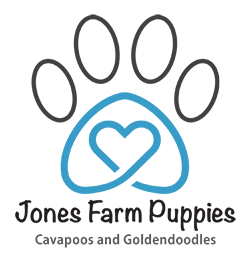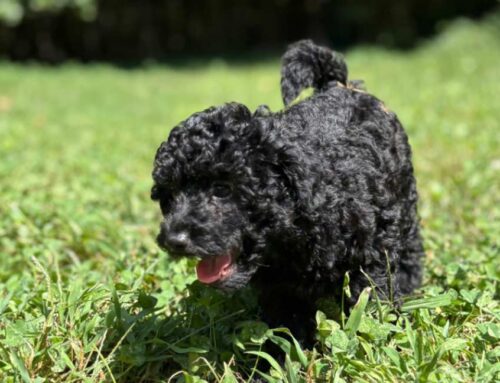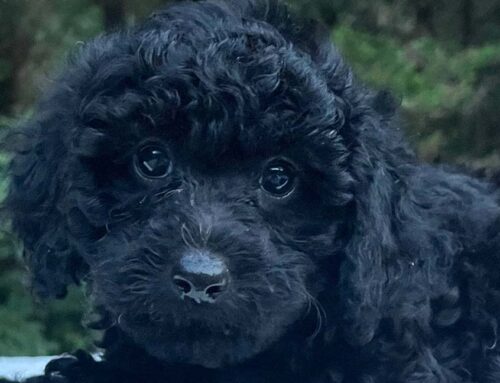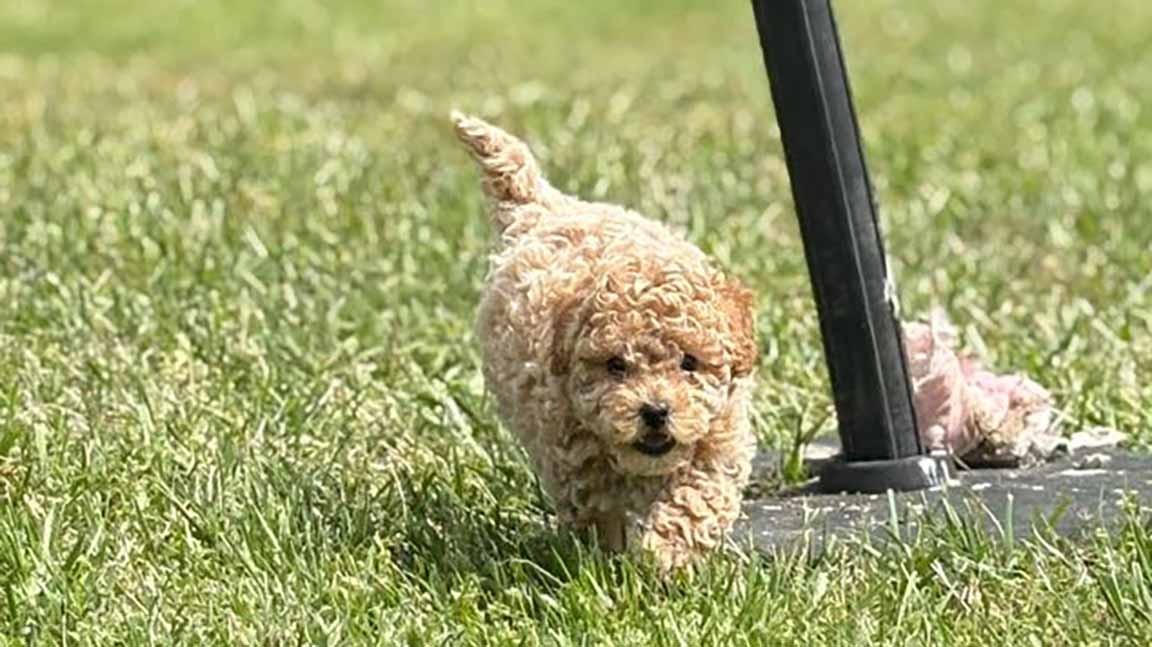
How to Tell a Dog’s Age: A Simple Guide
If you have ever met a sweet Cavapoo or adopted a rescue dog, you may have wondered how old they are. While puppies are easy to identify by their size, energy, and puppy teeth, adult dogs can be a bit trickier to age accurately. Knowing a dog’s age is crucial because it helps you understand their health needs, exercise requirements, and even the type of training that will work best.
At Jones Farm Puppies, we specialize in raising healthy Cavapoos and sending them home with complete health records, so our families always know their puppy’s exact age. For dogs without a known birthdate, there are several ways to make an educated guess. This guide will walk you through the signs to look for, from teeth to coat condition, and share tips from our hands-on experience raising puppies through every stage of life.
In short, the best way to tell a dog’s age is to look at a combination of physical features and behavior, with teeth being the most reliable indicator in younger dogs. As they grow older, signs like coat texture, muscle tone, and even eyes can help narrow down their age range.
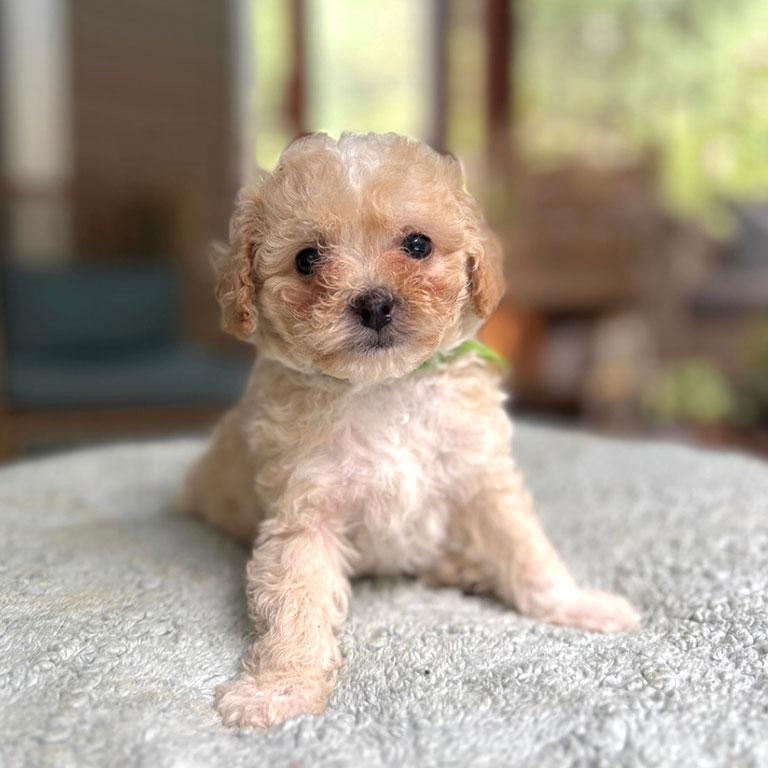
Why Knowing a Dog’s Age Matters
Age is not just a number for dogs. It plays a key role in their health care and overall well-being. A young Cavapoo will have very different needs than a senior Cavapoo. Puppies require vaccinations on a specific schedule, adults may need dental cleanings or joint supplements, and seniors often benefit from specialized diets and gentler exercise routines.
When you know your dog’s age, you can:
- Provide the proper nutrition for their life stage
- Schedule vet visits and preventive care at the correct intervals
- Tailor exercise to match their energy and joint health
- Plan training strategies that suit their attention span and learning style
Looking at Teeth: The Most Reliable Early Indicator

Teeth are the best way to estimate the age of puppies and young adult dogs. In the first year of life, dental development is very predictable.
- Puppy teeth come in at about 3 to 4 weeks of age
- Adult teeth begin to replace puppy teeth at around 4 months
- By 7 months, most dogs have their complete set of adult teeth
- Bright white, clean teeth usually mean the dog is under 1.5 years old
- Light tartar buildup appears in dogs aged 1.5 to 3 years
- More noticeable wear and tartar appear after age 3
In our whelping room, we use this timeline to confirm that each Cavapoo is developing normally. By the time they are ready for adoption, they either have their puppy teeth or are just starting to lose them, which makes for some adorable smiles.
Examining the Coat and Skin
Coat texture and color can change with age. Younger dogs tend to have softer, shinier coats. As dogs get older, especially past age seven, their fur may become coarser or thinner. You may also notice some gray hairs around the muzzle and eyes, even in lighter-colored breeds like Cavapoos.
Puppies and young adults also tend to have more elastic, smooth skin, while senior dogs may develop looser skin or small benign growths. Because we groom our Cavapoos regularly, we can easily spot these changes over time and adjust care as needed.
Checking the Eyes
A dog’s eyes can reveal a lot about their age. Bright, clear eyes are common in younger dogs. By middle age, some dogs develop a slight bluish haze called lenticular sclerosis, which does not affect vision but is a normal sign of aging. In older dogs, cloudiness or cataracts can appear, sometimes affecting sight.
We have noticed that our senior Cavapoos often have a softer, gentler expression compared to the alert, wide-eyed look of a young puppy.
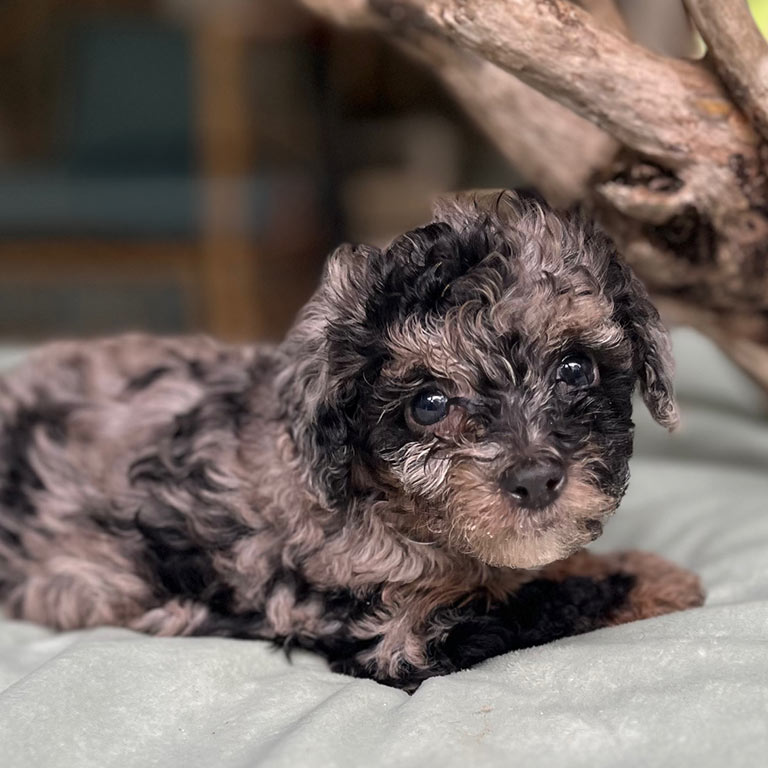
Observing Muscle Tone and Activity Levels
Younger dogs usually have strong muscle tone and boundless energy. They are eager to play, run, and explore. As they age, dogs may slow down, lose muscle mass, and show less interest in high-impact activities. This is especially true for senior Cavapoos, who often prefer a comfortable bed and a gentle walk over an intense game of fetch.
From a breeder’s point of view, watching a puppy grow into an adult and then a senior is a beautiful reminder of how each life stage has its own charm. Puppies are all about discovery, adults have a steady confidence, and seniors offer a calm, loving presence.
Looking at Behavior and Habits
Behavior can be a strong clue to age. Puppies are curious, playful, and sometimes mischievous. Adult dogs are more predictable, while seniors tend to be calmer and more set in their routines.
In our experience, Cavapoos often keep a playful streak well into their senior years, which can make them seem younger than they are. This is one reason why it is essential to look at multiple signs rather than relying on just one.
Veterinary Tools for Determining Age
While observation can give you a reasonable estimate, a veterinarian can use additional tools to narrow down a dog’s age. These may include dental X-rays, joint evaluations, and overall health assessments. Bloodwork can also reveal organ function, which often changes with age.
For rescue dogs or those without health records, this professional assessment can be especially valuable.
Real-Life Experiences from Jones Farm Puppies
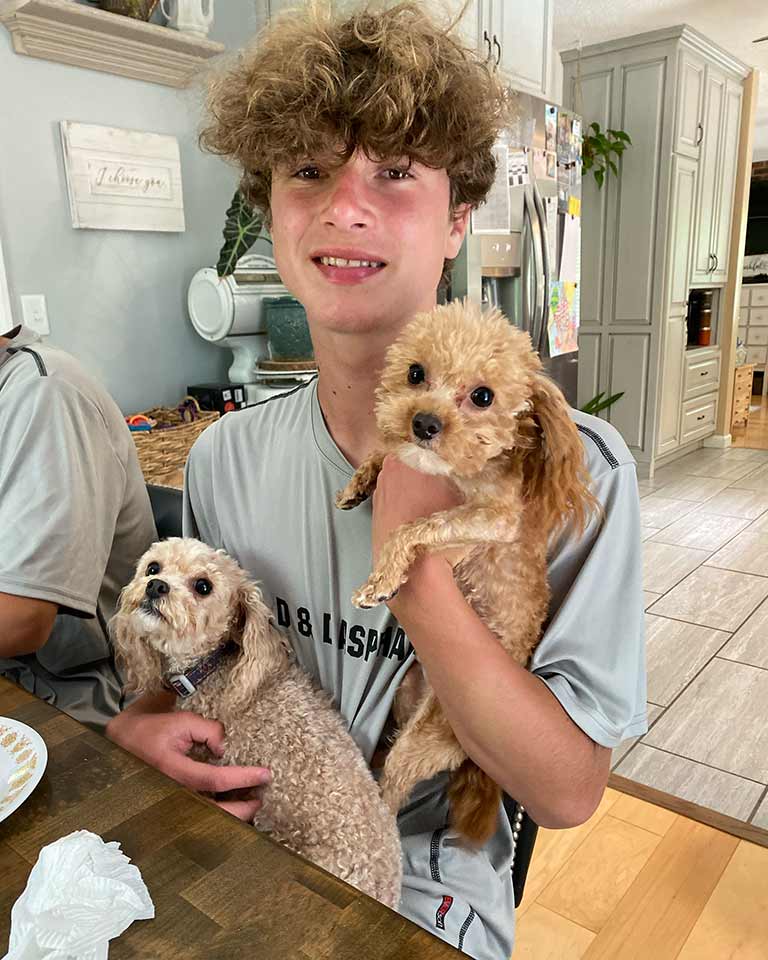
Tracking Growth from Birth
When we raise a Cavapoo litter, we weigh and measure the puppies regularly. By keeping detailed growth records, we can accurately track development and make sure each puppy is thriving.
Watching Dental Changes
One of the most exciting stages is when puppies start losing their baby teeth. We often find tiny puppy teeth in the play area, which we share with new families as a keepsake.
Observing Aging in Our Retired Dogs
Our retired breeding dogs stay with us or in loving guardian homes. Over time, we see the gradual signs of aging in their coats, eyes, and energy levels. These changes guide how we adjust their care, from switching to a senior diet to adding supplements for joint health.
Why Knowing a Dog’s Age is About More Than Numbers
Understanding your dog’s age is really about giving them the best quality of life. Age-appropriate care keeps them healthier and happier for longer. For puppies, it means setting the foundation for a lifetime of good health. For adults, it means maintaining that health through proper nutrition, exercise, and vet care. For seniors, it means making their golden years as comfortable and joyful as possible.
At Jones Farm Puppies, we believe in supporting every stage of a dog’s life. Whether you adopt a Cavapoo puppy from us or already have a beloved dog at home, knowing their age helps you be the best possible caretaker.
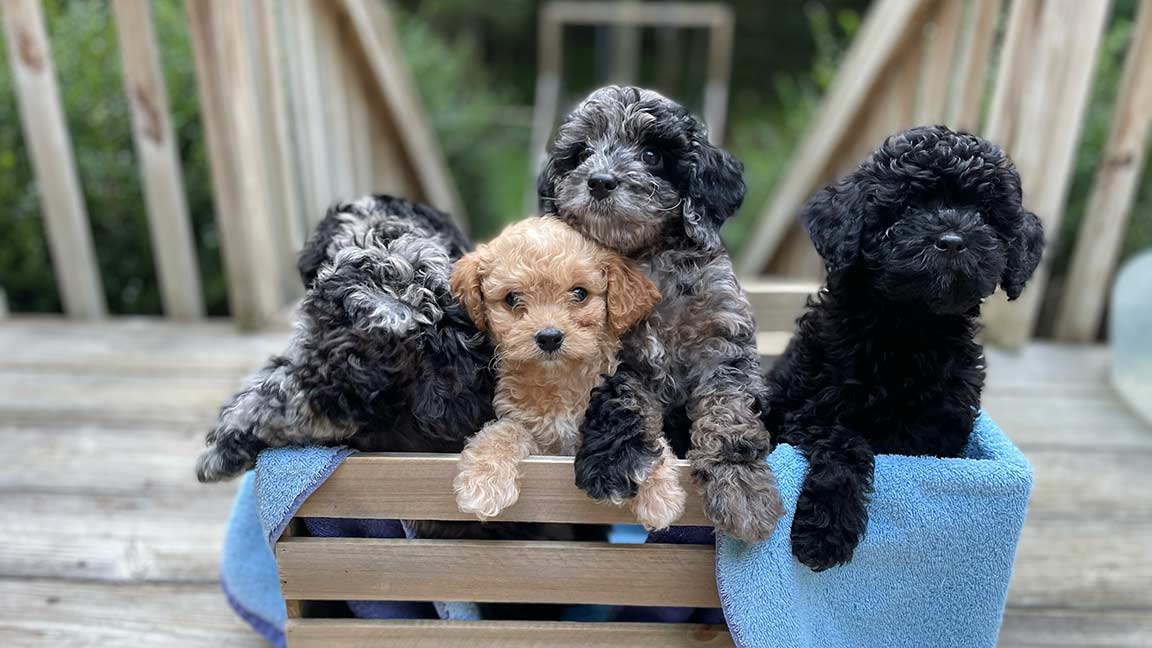
FAQ
Can I tell a dog’s age exactly just by looking?
Not always. You can usually estimate within a range, but exact age may require veterinary input.
Are teeth always accurate for aging?
Teeth are very accurate in puppies and young adults, but less so in older dogs due to variations in dental care and genetics.
Do Cavapoos age slower than larger breeds?
Generally, smaller breeds like Cavapoos live longer and show signs of aging later than larger dogs.
Can behavior alone tell me my dog’s age?
Behavior can give clues, but it should be combined with physical signs for accuracy.
What if I adopt a dog with no records?
A vet check is the best first step to get a good estimate of age and create a care plan.
